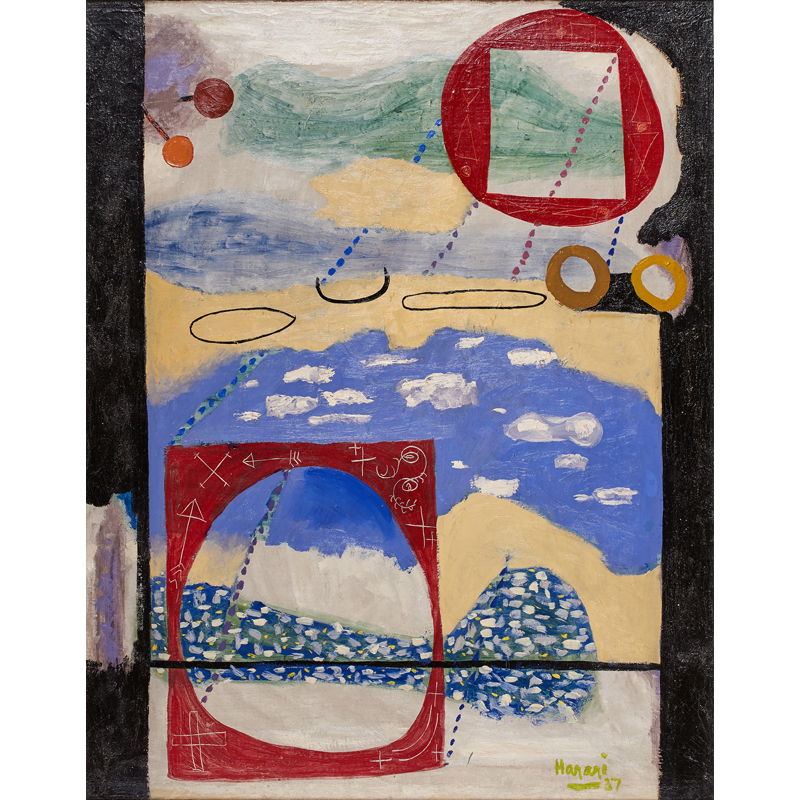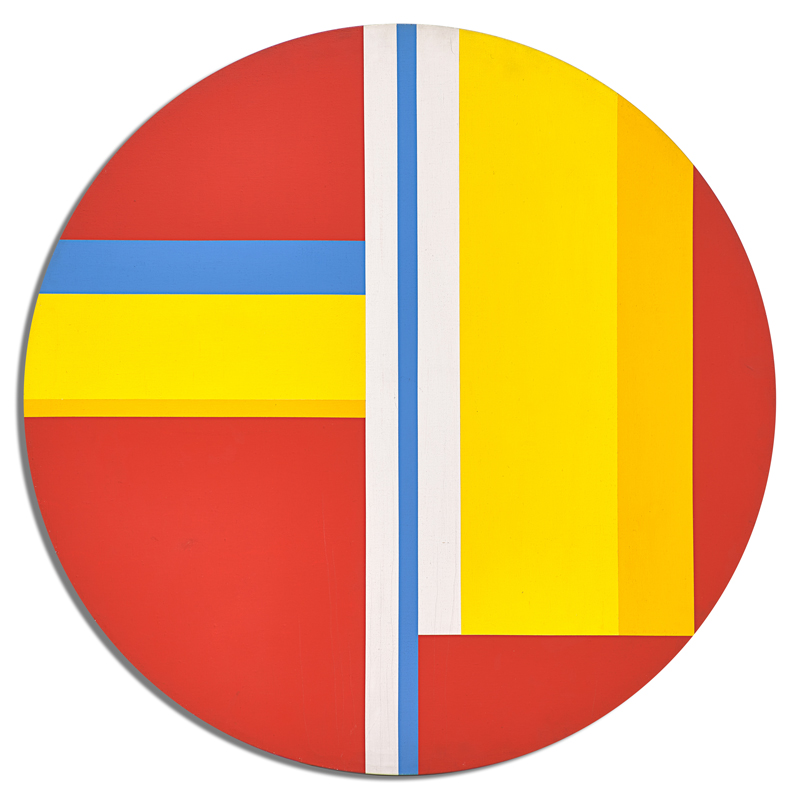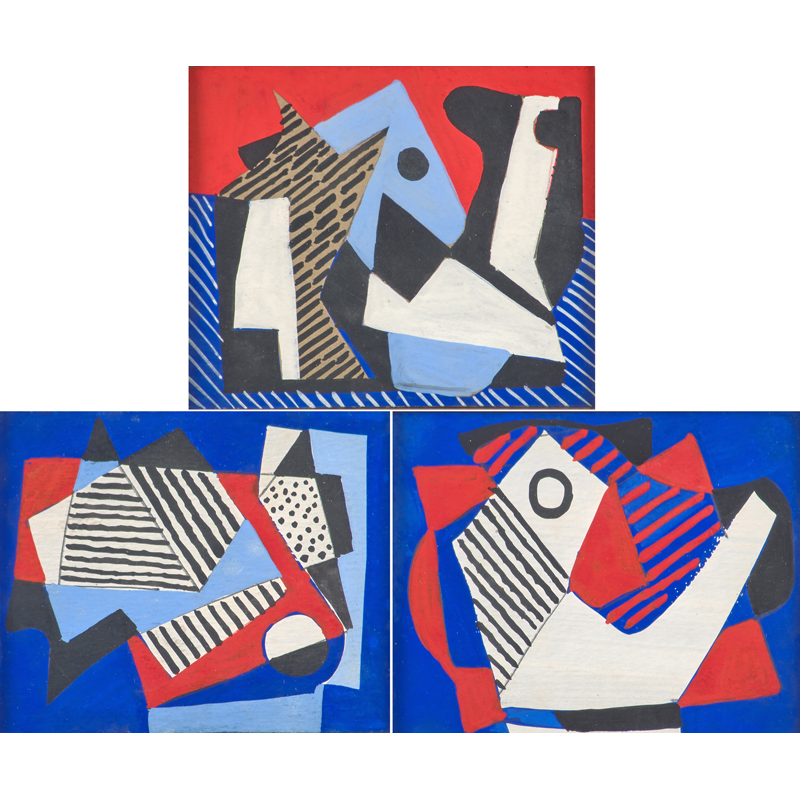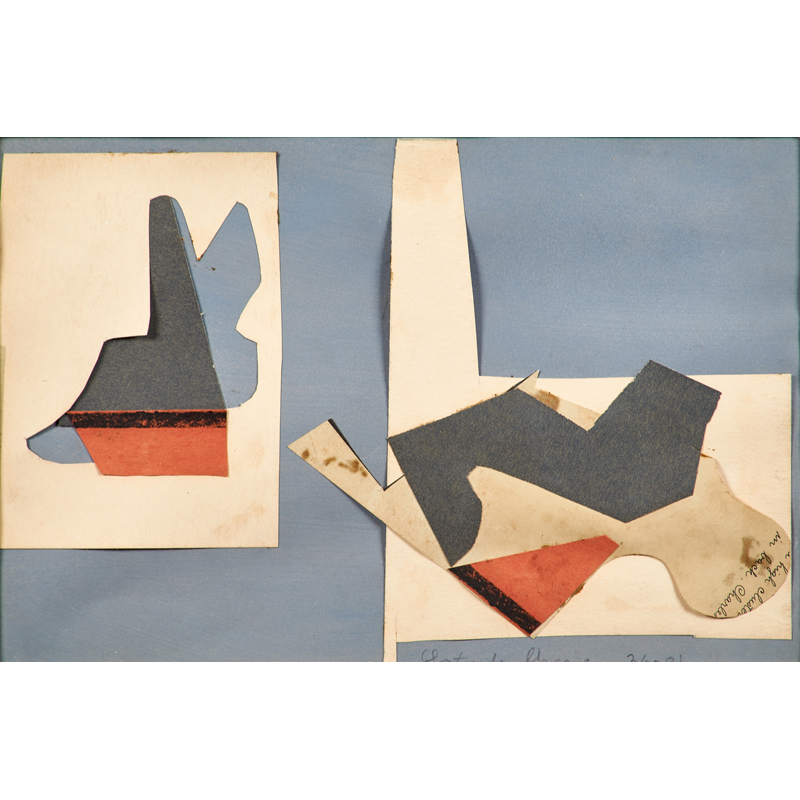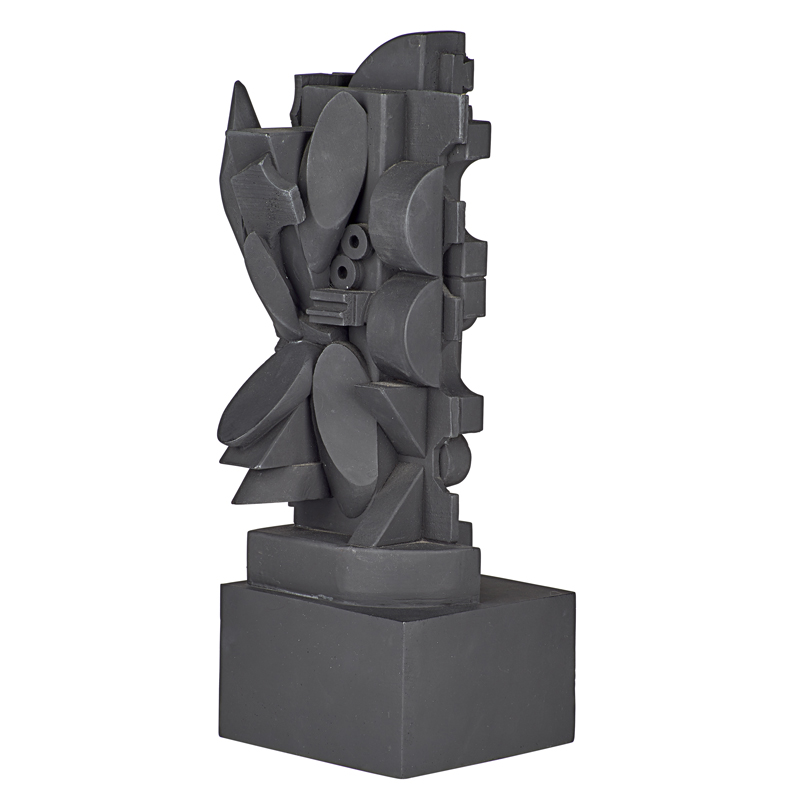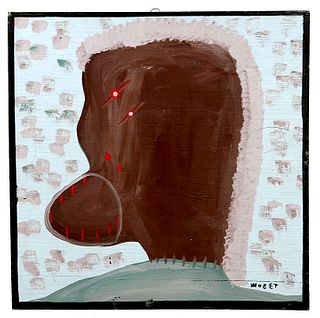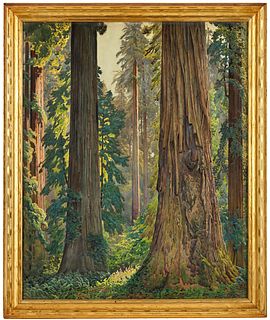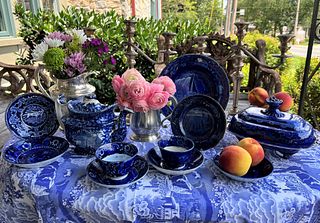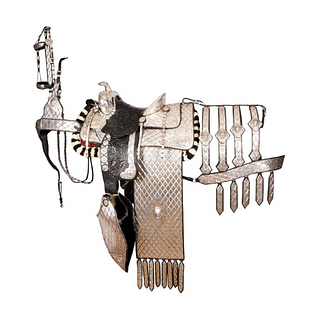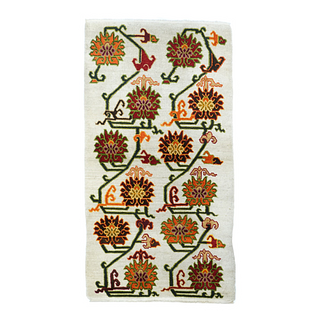The Birth (And Growing Pains) of American Abstraction
In 1913, the Association of American Painters and Sculptors hosted the International Exhibition of Modern Art, commonly referred to as The Armory Show. This three-city exhibition, which ran in New York City, Chicago and Boston, was the pioneer exhibition of modern art in the U.S. and introduced American audiences to the concepts of Expressionism, Futurism, Cubism and other emergent styles championed by the European avant-garde.
Lot 1, Hananiah Harari, Aeroscape, Oil on canvas, 1937; Estimate $4,000-$6,000
Although Americans had been astounded by what they saw in 1913, the two decades that followed The Armory Show were difficult for American modernists seeking to exhibit their work. The art establishment seemed to prefer the sure-bet of American Impressionism, with the more rebellious dealers exhibiting European Expressionists and Surrealists. Although European artists were being exhibited in the U.S., their American contemporaries were eschewed for creating art that was deemed “too European” (1). American non-objective painters were ostracized by galleries and confused collectors. In an effort to overcome these obstacles (and vent their frustrations) a small group of artists, based out of New York City, began to casually meet at each other’s studios. Word of their lively conversations attracted more artists and eventually, in 1936, American Abstract Artists was established.
Lot 602, Ilya Bolotowsky, Tondo in Red and Yellow, Acrylic on canvas, 1975; Estimate $25,000-$35,000
The goal of American Abstract Artists (AAA) was to provide a platform for non-objective artists to exhibit, sell and educate the public about their work. As a collective, AAA supported its members through publishing opportunities and organized exhibitions. It also educated potential collectors by hosting panel discussions, lectures and forums on abstract art. Even though the name suggests a staunch nationalism, AAA welcomed many European artists fleeing the terrors of a Nazi-occupied Europe, including Piet Mondrian, Fernand Léger and László Moholy-Nagy among others. The group’s primary goal was to propagate abstract art, and have it embraced by galleries and collectors alike.
In a fortuitous stroke of good fortune, Rago Auctions is pleased to be representing a variety of work by founding members of AAA. The opening lot of our American + European sale features a fine non-objective oil on canvas by Hananiah Harari, Aeroscape (1936). The sale also boasts three lots by founding AAA member, Ilya Bolotowsky: three lyrical abstract drawings from the 1930s and a large tondo oil on canvas from the 1970s, which illustrates Mondrian’s influence on the artist. Lot 3 presents three bold gouaches by Vaclav Vytlacil from 1938. Gertrude Greene, one of the eight founding women, is represented by a mixed media collage created in the same year the AAA was founded. Other founding members including Byron Browne and Josef Albers are also included in the sale.
AAA’s long running status as a leading organization for non-objective artists has allowed it to embrace a diverse and prestigious membership. A selection of current (or past) members whose work is represented in Rago's upcoming sales include: Mel Bochner, Eleanor de Laittre, Herbert Ferber, Sam Gilliam, Maurice Golubov, Sol LeWitt, John Little, Joseph Meierhans, Louise Nevelson, Ad Reinhardt, Robert Ryman, Jean Xceron, Richard Tuttle and John Sennhauser.
Lot 586, Louise Nevelson, The Dark Ellipse, Polyester resin, 1974; Estimate $8,000-$12,000
View more work by American Abstract Artists in Rago's May Fine Art Auctions, here.
1. (Lucio Pozzi, "A Thousand Rivers" American Abstract Artists International and BAU Institute, New York, NY, pub., 2010)
- Rafael Osona Auctions' Modern & 19th Century Design From Nantucket Estates
- Quilts as a 2025 Design Trend: A Celebration of American Heritage and Craftsmanship
- A Celebration of Sports History and Collectibles
- The Thrill of Sports Memorabilia Auctions: A Collector’s Paradise
- Demystifying Coin Condition: A Guide to the Sheldon Grading Scale
- Snoopy & Friends: A “Peanuts” Auction at Revere
- Colorful Chinese Monochromes at Millea Bros
- 12 Holiday Gifts for the “Impossible to Buy For” on Bidsquare
- Alluring Art Objects and Accessories from the Estate of Chara Schreyer
- Kimball Sterling's One-Owner Outsider and Folk Art Collection Showcases Masters of the Unconventional



 EUR
EUR CAD
CAD AUD
AUD GBP
GBP MXN
MXN HKD
HKD CNY
CNY MYR
MYR SEK
SEK SGD
SGD CHF
CHF THB
THB